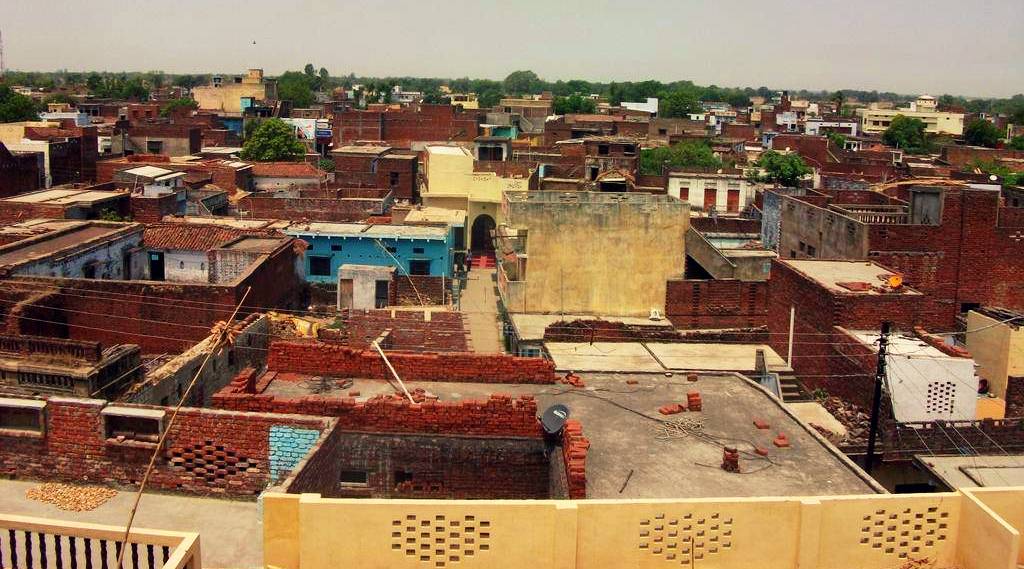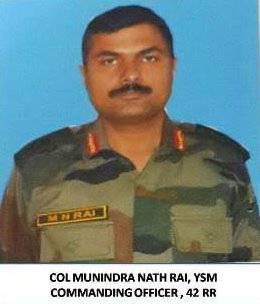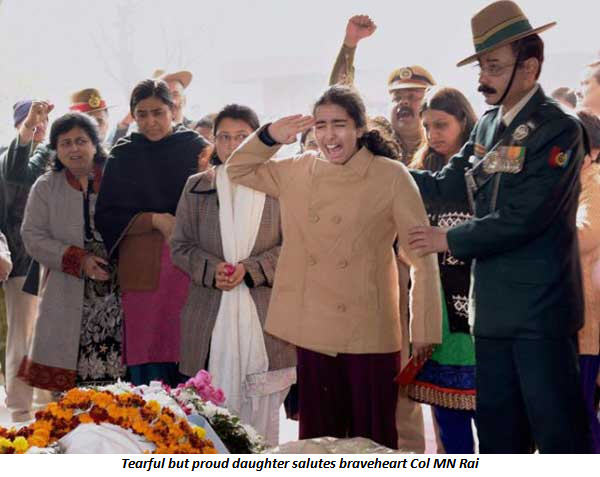Gahmar
Gahmar
A village where every family gives birth to a soldier
 A 90 km drive from Varanasi takes you to India's largest village Gahmar, in district Ghazipur. But that is not its only claim to fame.
A 90 km drive from Varanasi takes you to India's largest village Gahmar, in district Ghazipur. But that is not its only claim to fame.
Clouds of golden earth rise before the sun does in Gahmar, as a platoon of barefoot runners pound the 10 km track, their accelerated heartbeat keeping time. Rain or shine, the group is there at dawn, the run will ensure a perfect muscle tone and high endurance needed to clear the armed forces' physical tests, a vital component of the recruitment camps.
This village prides itself as the 'home of the fauji'. Each household has a military connect; at least one member of every family here is currently employed or has served in the armed forces. Some have as many as 6-7 members in the forces.
According to (data maintained by) the Bhootpoorva Sainik Seva Samiti (Indian Ex-Service men society), close to 15,000 men from Gahmar are in active service, and over 10,000 veterans have returned to the village post-retirement.Many of these veterans were witness to the wars of 1962, 1965, 1971 and the Kargil war.

The villagers say this trend of joining army ranks started pre-Independence. According to them, their ancestors are believed to have been 'forced' by the British to join the forces in 1914 to fight in the World War I.
President of Indian Ex-Service Men Society (IESM), Capt Markandey Singh elaborated on it. “More than 220 soldiers were sent to fight in the First World War Twenty one men were killed in action. As homage to these martyrs, their names were engraved in stone at the Junior High School, near Gahmar Police Station."
After Independence, villagers voluntarily started joining the Indian armed forces in large numbers and the practice is at the core of the village ethos. Army, Navy or Air Force, the men from Gahmar are found serving across ranks.
Apart from Gahmar, adjoining villages in the district like Zamania, Malsa, Reotipur, Dedhgawan, Basuka, Nagsar and Suhwal too send a lot of men to the armed forces. Late Colonel Munindra Rai, a Yudh Sewa Medal awardee, who was killed fighting insurgents in Kashmir in January 27, 2015, hailed from Suhwal village.
His ashes were carried in a procession from Ghazipur Railway station to his home in the city. The procession was attended by thousands, including war veterans of Gahmar village, who paid tribute to the martyr they called their own son-of-soil.

The life in these villages, especially Gahmar, is woven around the brave soldiers who are serving and have served the armed forces. The culture is in tandem, marriage prospects of a groom from Gahmar improve manifold if he is serving in the armed forces. A civilian groom has to wait his turn. Regular prayers are said for the safety of those serving, and the veterans are honoured on their return home.
Gahmar, as a village has grown leaps and bounds under the patronage of thousands of serving armed forces personnel. The money orders sent by the soldiers to their respective families back home accounts for a major share of the village's GDP.
Even the Armed Forces acknowledges the contribution of the village. Every month, the army provides the facility of a mobile Canteen Stores Department (CSD) for family members of serving personnel, who make their purchases on subsidized rates. Similarly, a team of doctors from Varanasi visits the village for monthly check-ups and treatments.
The village has numerous schools and colleges, and some youngsters are looking at learning new professional skills. However, for a majority, the time table will never change. The bare feet that run several miles everyday, train to step into the right shoes soon.
***************************




